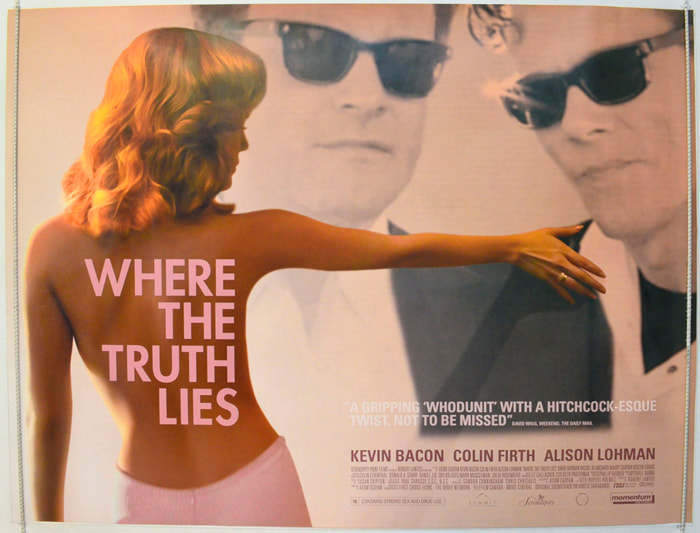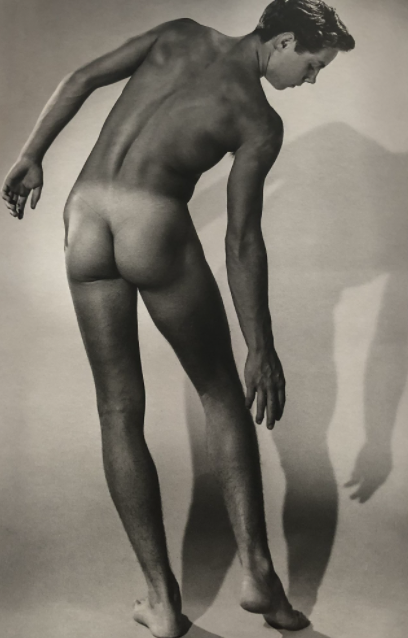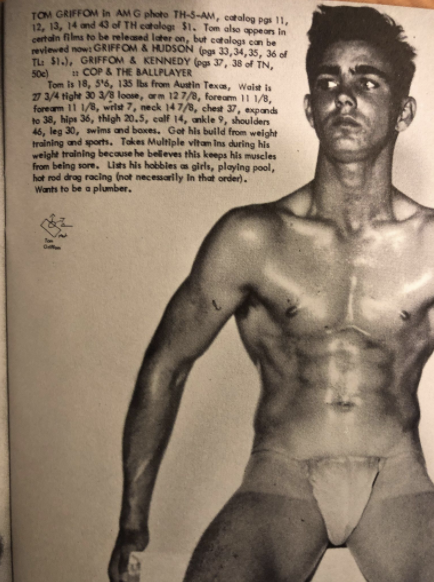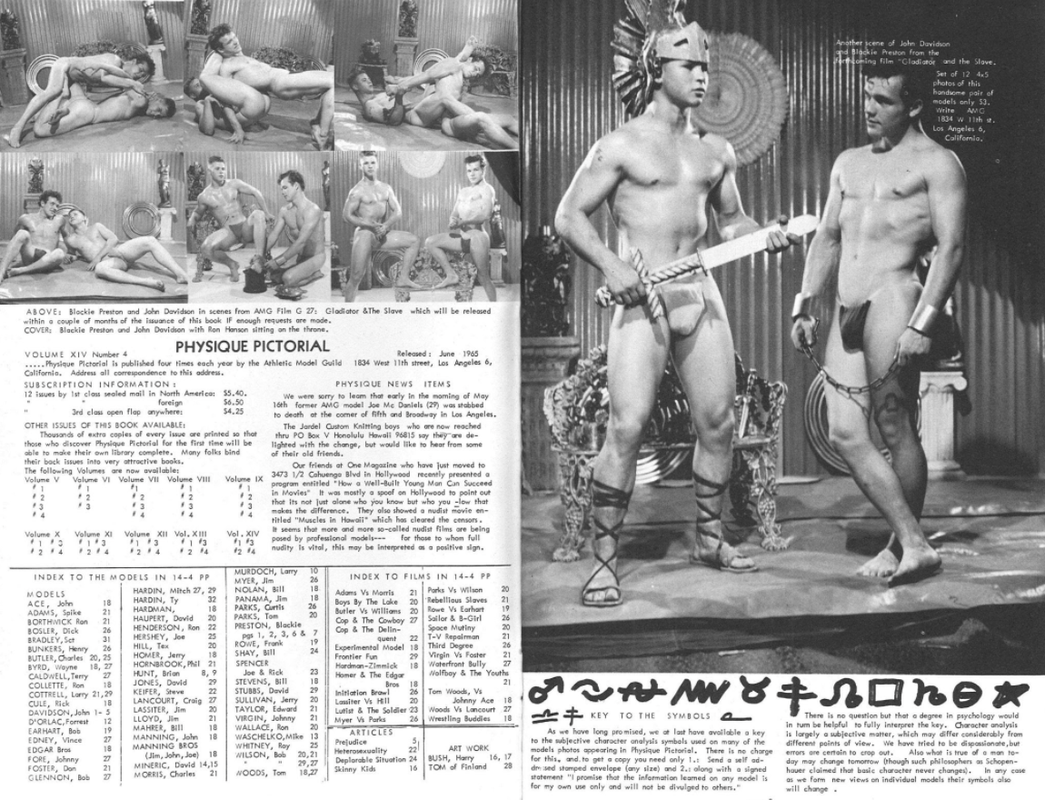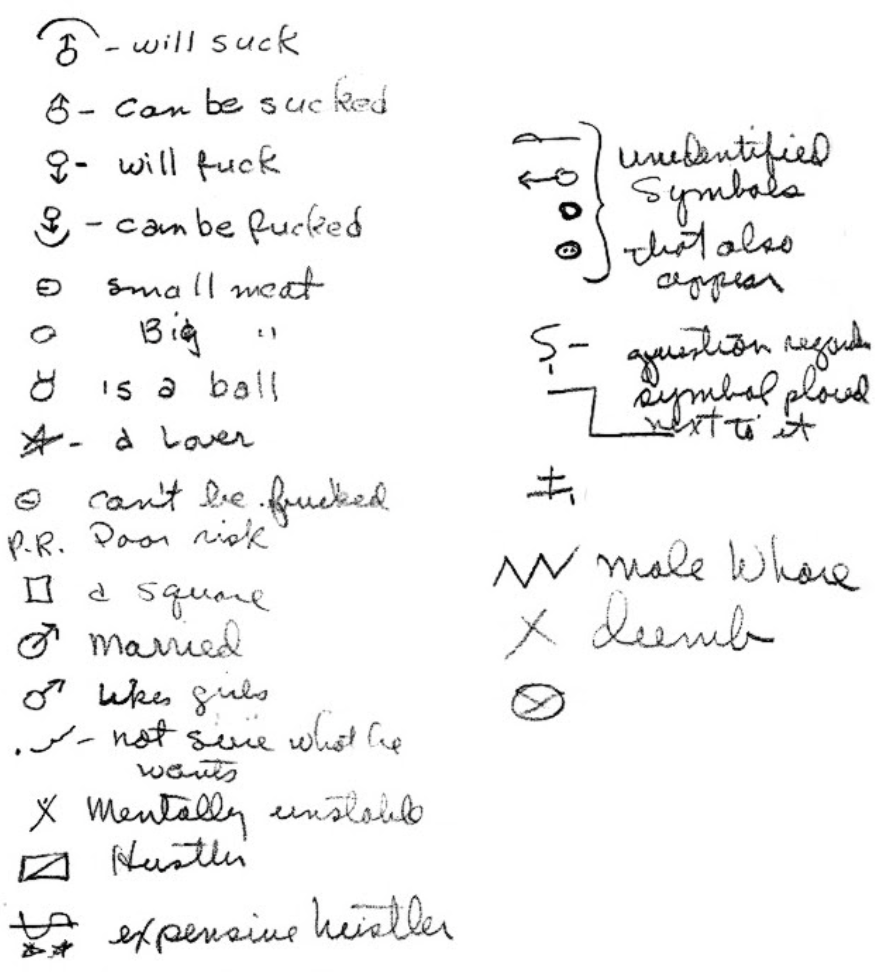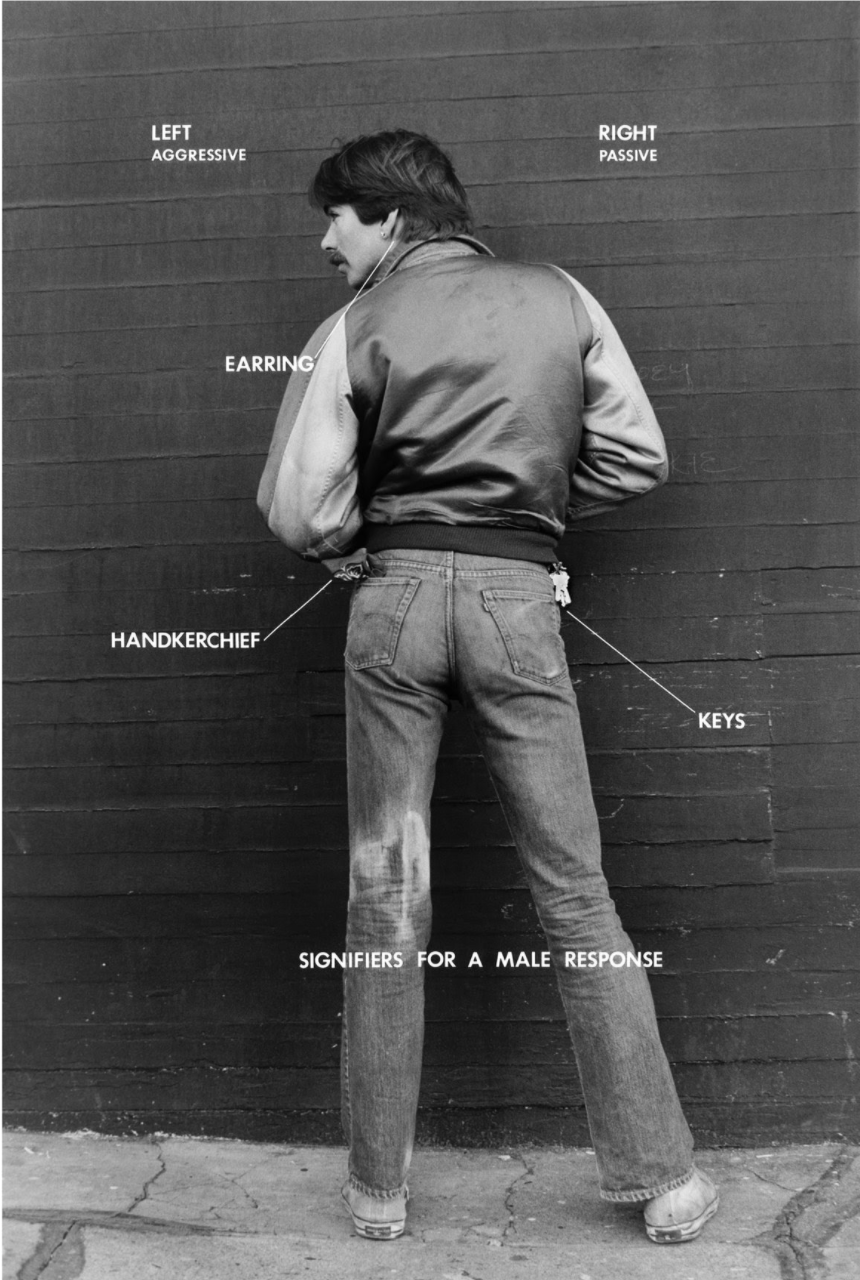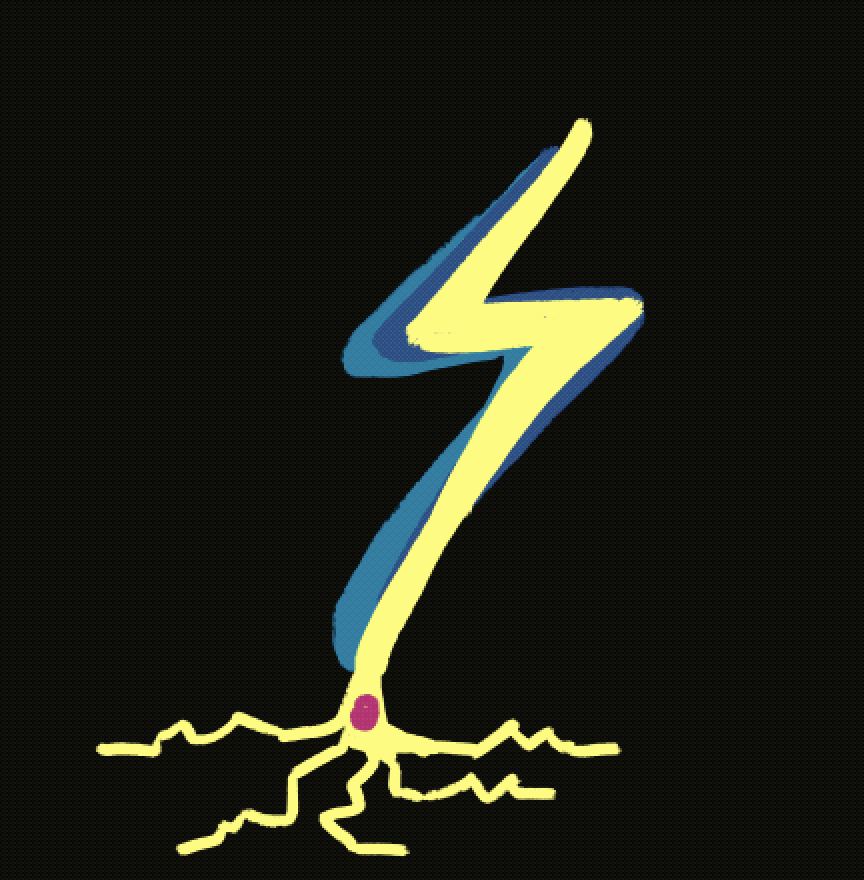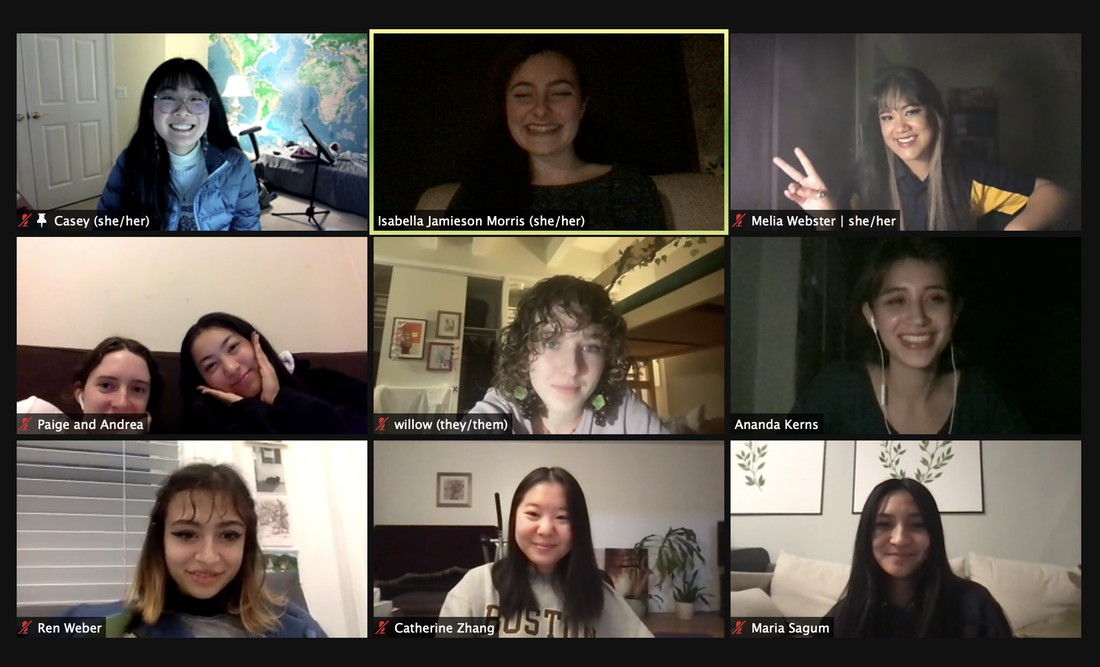|
by Truly Edison There is probably no movie that I defend more frequently or with more intense passion than Atom Egoyan’s dead-in-the-water 2005 murder mystery, Where The Truth Lies. If you’ve never heard of it before, you are DEFINITELY not in the minority; the only other people I know who’ve seen it are people I’ve literally watched it with. I’m the proud owner of its only English-language five star Letterboxd reviews. I’ve written poems about it, used images from it in visual art, and all around been a complete lunatic about it since high school. I rewatched it last night with a close friend of mine who had never seen it, and the time has come to finally admit something I never wanted to say: Where The Truth Lies is not very good.
Don’t get me wrong, there are parts of it that are EXTREMELY good, and this article is far from a denouncement of my love for this film. For one thing, the characters. Oh my GOD the characters. Lanny and Vince are a late-1950s comedy duo much in the style of Dean Martin and Jerry Lewis (lawsuit-threateningly so, in the case of the film’s source material). They have their fun little bit that they do along with all of the other tropetastic trappings of 50s celebrity, like extreme drug use, mob involvement, and what my friend accurately describes as “no homo threesomes”. Yeah, that’s where this is going. The homoeroticism between these two guys is INCREDIBLY interesting, especially when it comes to the coded language around their stage routine; it’s described as a “boy-girl act” and a “marriage”, and they’re regularly referred to as (comedy) partners. All that coding ultimately pays off in an emotionally excruciating climactic scene that I am never not thinking about. Their interactions are punchy and fun and demonstrate an obvious intimacy between the two that’s still rife with uncertainty. The other major characters—Maureen, victim of the murder that ends their career, and Karen, journalist trying to discover the truth fifteen years later—play off of each other beautifully despite never meeting, crafting this unique parallel across time. I’m a sucker for a minimal cast with a water-tight interpersonal dynamic. I just wish they were in a better movie, you know? The more I think about my last Where The Truth Lies re-watch, the more I realize its glaring structural problems. It tackles a lot of big-money genre modes—the locked-room murder, the unreliable narrator, all that good good stuff—but doesn’t exactly know what to do with them. Its central mystery seems somehow too thin and needlessly convoluted at the same time. More often than not it relies on Karen entering a kind of 2010 Sherlock-esque ‘mind palace,’ returning from it with an extremely convenient realization that no actual person would have pieced together. Most glaring (and most complained about by others) is the film’s heavy-handed voiceover narration; it works sometimes, is necessary sometimes, but it’s just. Everywhere. Even I found myself starting to get sick of it. And it drives me insane because the movie should work. All of the elements are there for it to work. A sexy mid-2000s murder mystery dual-set in the 50s and 70s with Colin Firth and Kevin Bacon as repressed bisexual comedian boyfriends? It should have been Brokeback Mountain two months before Brokeback Mountain. The concepts, the themes, the images, the CHARACTERS are all right there, waiting to be put into something that could easily be fantastic given the right treatment. They’re waiting to be put into the version of the movie that exists in my mind and that I had convinced myself was the real thing. I haven’t even talked about the ending of the film yet. I’m going to do that right now, so here’s a big old SPOILER ALERT for anyone who has (somehow) been convinced to watch this thing. Go do that and come back to this tab in two hours. Okay? Okay. For all its flaws, Where The Truth Lies ends beautifully: fifteen years after the crime, Vince is forced to accept that he murdered Maureen in a drug-induced haze after she blackmailed him with the threat of making his sexuality public knowledge. Unable to cope with the guilt, he takes his own life in the same hotel room he took hers in all those years ago. Lanny is forced to accept that he helped Vince get away with it, and though it saved their lives and neither of them went to jail it ended their relationship forever. In his words, “The marriage was over.” Karen comes away from the story worse off for having gotten the thing she wanted from its very beginning—the truth. Nothing hits better than a gorgeous bummer of an ending that wraps up everybody’s business in the most heartbreaking way possible. Except Where The Truth Lies doesn’t end after this revelation. In the last five minutes of the movie Karen finds out that nope, actually, The Butler Did It. Yes, that is the true ending of the film, played entirely straight. Yes, I wish I was kidding. Despite having set up the perfect conclusion, the movie trips over its shoelaces with possibly the dumbest reversal in film history, too soon to the end for a viewer to even know what to do with it. Why this happened I will never understand. The only possible explanation is that it must be how the novel ends, and it's a terrible ending for a novel, too. It literally boggles the mind how MULTIPLE PEOPLE could have written, read, greenlit, shot, edited, and released this without realizing how much it undermines not only the end of the movie but the movie as a whole. And I defended this stupid ass ending! I defended this stupid ass ending for years! I have put in a lot of hours convincing people (or trying to, at least) that Where The Truth Lies is an unsung masterpiece of the decade. I’ve always blamed the way it was royally screwed by the MPAA for its lack of cultural sticking power; I still think that’s true to a large extent, but I also think that as an adult it’s time for me to face the cold, hard facts. Where The Truth Lies is not a particularly good movie. But my question, dear reader, is this: does it have to be? Is it not enough for a movie to inject two pretend little guys into my brain and keep them there for the considerable future? Is it not enough to watch Colin Firth try to fuck Kevin Bacon for an hour and forty-seven minutes? Is it not enough for hot women in incredibly anachronistic outfits to stare plaintively into the camera for long stretches of time and then solve decade-old cold cases? I wouldn’t have written this whole article if I didn’t love Where The Truth Lies with all of my heart and soul, despite its problems. I love it even more every time I watch it and I love it even more every time I watch it with somebody new. Quality aside, it’s a movie I love to think about and feel about, and above all talk about. My favorite movie is bad and I’m proud. And there’s no way I’m the only person on the planet who feels that way, either. So repeat it with me: MY FAVORITE MOVIE IS BAD AND I’M PROUD!!!
2 Comments
by Maxwell Sutter Zinkievich Prior to the second World War, the prevalence and structure of homosexual society within the United States was fundamentally fragmented and unrecognized. Homosexual culture indeed existed in the United States, but there was yet to be an overarching lexicon to tie together gay individuals into a solid subculture. During the war, however, havens of gay male culture began to recognize themselves through what is suspected to be a symptom of the famous “Blue Discharge” and the resulting unshipping of gay men from the Navy at bases such as San Fransisco’s Presidio. While these people were still ostracized from mainstream society, they found community and culture within each other. The city of San Francisco quickly became a hub for queer culture and gained notoriety for these groups even faster. The increased prevalence and activity of queer people caused a push to describe their behaviors. Alfred Kinsey, inspired by questions raised by earlier German studies conducted by Magnus Hirschfeld at the Institute of Sexology in Berlin in the 1930’s, was one of the first to begin a mission to map, describe, and taxonomize the sexual behaviors of humans. At the same time, artists like Robert Mizer and Hal Fischer were working within the homosexual community and making observations and recordings of their own. While medical researchers like Alfred Kinsey were fascinated with physical behaviors, they found it hard to collect meaningful data on the personal lives of the individuals that they surveyed. Bob Mizer’s Subjective Character Analysis, Hal Fischer’s Gay Semiotics, and other taxanometric descriptions of queer individuals served the gay community not only as recordings but also tools of teaching and indoctrination into a subculture comprised of individuals ostracized from mainstream society. They create a distinct visual language for those privy to the code to glean information about others like themselves. While Kinsey’s work demonstrates the mainstream interest in gay culture, analogstandings, and identities. When Alfred Kinsey founded the Institute for Sex Research at Indiana University in 1947, the college’s mission was to document and describe the sexual behaviors of the human species. Using a combination of clinical trials as well as extensive surveying, he was able to collect a truly astounding amount of quantitative data describing human sexuality. His analytical findings were first published in Sexual Behavior of the Human Male (1948). In this work, Kinsey and fellow researchers focused solely on the “human male,” using survey data on thousands of men’s sexual experiences. While Kinsey considers a wide breadth of male sexuality, for the objectives of this paper a focus will be placed on section twenty-one entitled “Homosexual Outlet.” Within this section, Kinsey generally discusses two things: what percent of the human male population is or considers themselves homosexual, and what behaviors and attitudes make a man a ‘homosexual.’ Through his surveys of thousands of men, Kinsey was able to collect a complete view of what the sexual landscape looked like for men at the time. He was able to find that a sizable proportion of the population had had at least one encounter that could be deemed homosexual in their lives. Pardoxically, Kinsey also finds that the vast majority of the human male population would not describe themselves as homosexual, even if these individuals conducted sexual relations with other men on a somewhat regular basis. “. . . the homosexuality of certain relationships between individuals of the same sex may be denied . . . because the situation does not fulfill other criteria that they think should be attached to the definition. Mutual masterbation between two males may be dismissed . . . as not homosexual, because oral or anal relations [did not take place]. . . Some males who are being regularly fellated by other males without, however, ever preforming fellation themselves, may insist that they are exclusively heterosexual.” (Kinsey, pp. 616, para. 2-3) Kinsey makes these remarks in order to further clarify the fact that not only is the world of sexuality not as logical and straightforward as a clinician would hope, but also that there is not even a lot of consistency in individuals’ claims about themselves. The argument could be made that this is due to the fact that Kinsey’s surveys were voluntary but also that societal opinions of homosexuals were particularly sour at the time. This explains Kinsey’s adoption of an analytical gaze and his primary interest purely in the quantitative data on homosexual experiences. Through the study, Kinsey focuses on behaviors themselves and the implications they have on sexuality and sexual identity, while somewhat ignoring the greater societal and cultural pressures that someone identifying as a homosexual would have to bear. As per its title, Kinsey’s work highlights the physical sexual behaviors of the human male. I am distracted, however, by the lack of inclusion for the political and societal implications that would have pressured these individuals at the time of the study. While Kinsey discusses these pressures, and understands the non-response bias, he does not seek to explore cultural forces within the homosexual community. This was a culture that Kinsey did not have access to, and did not speak the language of. Moreover, Kinsey as a researcher was not privy to the inner lives of persons living outside of conventional heterosexual society. In order to get a perspective into the everyday lives of homosexual men in the mid 1900s, one must look to publications made by, and for, self-proclaimed homosexual individuals. Fig. 1 - 1000 Model Directory (VARIA), Bob Mizer, Jim Grant, Silver Gelatin Print, Los Angeles, California, 1949 Robert “Bob” Mizer was an American homoerotic photographer famous for his self-published magazine Physique Pictorial. In 1945, Mizer founded his Los Angeles photography studio -- the “Athletic Models Guild” or AMG. . Mizer’s publications were sold under the guise that they were bodybuilding magazines, not for homosexual desire, but heterosexual appreciation of another man’s physique. It is quite obvious, however, to both a contemporary and modern viewer that these photographs carried intentional homoerotic undertones [Fig. 1]. Issues of Physique Pictorial typically included photographs of models, a brief synopsis of their body measurements, a few sentences about their interests and life plans, and information about what to mail to Mizer in order to receive films or other media of them alongside other models (usually wrestling or some equally suggestive activity). In the October 1964 issue, Mizer began to include cryptic hand-drawn symbols that appeared alongside the text descriptions of models. These symbols appeared to be composites of several unique smaller symbols, and the combinations varied widely between different models [Fig. 2]. These symbols appeared in conjunction with model photographs without apparent explanation for the better part of a year until the publication of Volume 14, Number 4 in June 1965. The first two pages [Fig. 3] provide the reader with not only an explanation of what these symbols represent, but also how to decipher them. Mizer uses these symbols, which he dubbed his “Subjective Character Analysis” (SCA) to describe not only the personality characteristics of the men that he photographed, but also their sexual preferences and experiences. In the June 1965 issue, in order for readers to gain access to the code sheet, or “key”, for these symbols Mizer instructs readers to: “. . . to get a copy [of the decoding sheet] you need only 1.: Send a self addressed stamped envelope (any size) [to the same address that one writes to purchase films and issues] and 2.: along with a signed statement ‘I promise that the information learned on any model is for my own use and will not be divulged to others.’ ” (Fig. 3 pp. 3 para. 1) In conjunction with the complicated procedure which contains a pseudo-NDA, it is clearly evident that the level of secrecy surrounding the nature of this publication was based in mainstream perceptions of homosexuals. Fig. 2 - Bob Mizer, Tom Griffon, Physique Pictorial Volume 14, Number 1, section of page 13, section showing Biography as well as SCA symbol below, Black and White Print, Los Angeles, California, July 1964. Mizer was constantly plagued by lawsuits over the perceived deviance of his photography, and he was required to take various precautions in order to safeguard his work for both his own livelihood as well as for the sake of his customers. Requiring readers to write in through personal mail correspondence was something that was imperative due to the secretive circumstances. However, even if a customer wrote in to receive one of these decoding sheets [Fig. 4], they would only receive a partial decoding of the symbols, which purposely omits sexual descriptions and stays firmly put in personality characteristics. Mizer himself would only send out a hand-written portion including the sexual interests and histories of his models [Fig. 5] if he deemed the reader to be trustworthy enough. This usually meant that they both expressed homosexual interest as well as were long-term subscribers to the magazine. The goal of these SCA symbols was never explained in length by Mizer other than to say that: “There is no question that a degree in psychology would in turn be helpful to fully interpret the key. Character analysis is largely a subjective matter, which may differ considerably from different points of view. We have tried to be dispassionate, but errors are certain to crop out. Also what is true of a man today may change tomorrow (though such philosophers as Schopenhaure claimed that basic character never changes). In any case as we form new views on individual models their symbols also will change.” (Fig. 3 pp. 3 para. 2) Here Mizer is keen to tell the reader not only that these symbols are not definitive, but only serve to offer a momentary view into the life of the models. This arguably has two readings, one to the reader who would receive the non-sexual key and the one that received both. Perhaps Mizer is speaking to the sexual fluidity that he and his models would be aware of within the homosexual community which Kinsey only analytically describes. To those with the sexual key, Mizer could have been hinting to the idea that many of the models may have been more open to homosexual encounters than they actually were, in order to increase the erotic appeal of the magazines. Fig. 3 - Physique Pictorial Volume 14, Number 4, Pages 2-3, Bob Mizer, “Films Advertisement and Key to the Symbols”, Los Angeles, California, June 1965. (Scan Courtesy of PhD Candidate Max Böhner at the Humboldt University of Berlin) Fig. 4 - Bob Mizer, Subjective Character Analysis Decoding “Key”, Los Angeles, California, circa 1965. Reproduced in Dian Hanson, Bob’s World (Cologne: Taschen, 2009), p.11. Fig. 5 - Unknown, Reproduction of Bob Mizer’s Sexual Decoding of his Subjective Character Analysis Lexicon, The Museum of Contemporary Art, Los Angeles, California, circa 1965 https://moca.tumblr.com/post/73314240458/thenumberonesolitarycyclist-bob-mizer-marked While Mizer’s Subjective Character Analysis speaks to the physical actions of individuals just as Kinsey’s Sexual Behavior in the Human Male does, they both ignore the subject matter of Hal Fischer’s 1977 photographic exhibition Gay Semiotics. Within this photographic body, Fischer ignores the behavioral and the sexually mechanical. Instead he focuses primarily on the semiotics of gay culture: elements of fashion and behavior that would signify a broadcast of homosexual desire to others. Fischer was particularly interested in elements of fashion that signified homosexual position and standing. Using diagrammatic photographs paired with textual explanations, Fischer attempts to give the viewer a typical specimen of a gay man. In his photograph Signifiers for a Male Response [Fig. 6] Fischer shows the viewer several typical tropes of homosexual street fashion in San Fransisco. Throughout the rest of Gay Semiotics, Fischer continues this diagramatic approach to describing his own culture. Fischer discusses elements that would be viewed as alien to heterosexual culture, such as early elements we would now call “flagging,” intersections of the homosexual and S&M scene, as well as the prevalence of Amyl Nitrate, as an integral part of the community’s sexual activities. This is not only for the artistic purpose of exposing the inner workings of a subculture, but also to act as a historical recording and teaching tool for future generations of gay men. Fig. 6 - Hal Fischer, Signifiers of a Male Response, San Francisco, California, circa 1977 The behavior and classification of homosexuality dominated Kinsey’s exploration on male homosexual tendancies. Kinsey was only able to get a glimpse into their world through the use of his surveys where he asked questions based on their own personal experiences with other men. However, what Kinsey failed to find important is the culture that surrounded that group of people. And while it may have been seen as outside of the scope of his work, it would have answered a lot of his questions. As Kinsey discovered, sexuality is something that is neither static nor binary. Bob Mizer’s Subjective Character Analysis concurs with Kinsey by pointing out that both the personality attributes and sexual preferences of his models were also in flux. In addition, Mizer acknowledges that his SCA was at best recorded by an amateur, with a much smaller sample group than Kinsey, but they nonetheless reached similar conclusions. The sexual behaviors of homosexual, queer, and straight men are not only constantly changing in theirfocuses, but also in their drives. Kinsey struggles to define men, Mizer seeks to describe them, and Fischer taxonomizes typical expressions of homosexuality on the streets of San Fransisco. Each of these men seek to describe homosexual culture and they each have a unique approach. However, within the gains and losses of each we do get a glimpse into the greater, and paradoxically more intimate, world of what living as a gay man in the middle of the 20th century would have looked like. Bibliography
Kinsey, Alfred C., et al. Sexual Behavior in the Human Male. Indiana University Press, 2010. Lord, Catherine, and Richard Meyer. Art and Queer Culture. Phaidon, 2013. Mizer, Robert "Bob". “Subjective Character Analysis Key Advertisement.” Physique Pictorial, June 1965, pp. 2–3. Stacey. “Beyond the Muscle.” East of Borneo, 2 Nov. 2016, eastofborneo.org/articles/beyond-the-muscle/. by Khaled Alqahtani Reinnervation (noun): restoration, either spontaneously or by surgical grafting, of nerve supply to a part of the body from which it has been lost. The ongoing pandemic has reshaped our understanding of collectivity. As governments and institutions continue to fail people around the globe, independently-run organizations, collectives, and publications have been at the frontier of mutual-aid efforts, community organizing, and the fight against widely-spread misinformation. One such platform advocating for collectivity as the only possible way for shared healing is Reinnervate, a community art platform and publication inspired by our bodies’ ability to reinnervate and heal. Isabella Jamieson Morris, a third-year student studying molecular and cell biology with an emphasis on neurobiology, founded Reinnervate to create an experimental and multimedia space for creatives to explore the connections underlying anatomy, bodies, plurality, and community. She believes this exploration is an attempt for us as humans with a shared anatomy to reinnervate wounds caused by our shared struggles. What ignited the idea behind Reinnervate? From the beginning, Reinnervate was supposed to be an avenue, or rather a multitude of ways, for anyone to get involved in doing something [anything]. It was the summer of 2020, and I think more than anything it was the ultimate product of prolonged isolation and a disturbing confrontation with complacency. After having spent the first half of the year becoming acquainted with and embedded within the UC Berkeley community (one of the most diverse communities I have ever encountered with regard to intellectual interest, talent, experience and aspiration), the sudden social isolation brought on by the pandemic was a shock. An experience that I’m sure that any single one of us could attest to. The following social upheaval, mass-mobilization and mass-reflection brought on by the poignant response of millions to the unjust treatment of George Floyd during the Black Lives Movement that summer proved an impetus for the creation of Reinnervate. Suddenly, in sharp contrast to the numbness that had characterized the preceding months, horror, empathy, and anguish surged. Restlessness came to a head. Reconceptualizing positionality, the question of what each of us could do to remedy the situation we all found ourselves implicated in together, became a super salient issue. I couldn’t find any way to deny any longer that I needed to do something [anything]. Though I knew that I couldn’t speak for anyone else, I saw what others were doing already: organizing, sharing information, starting their own mutual aid projects, collecting donations through the sale of their artwork. And I just thought, why not make it easier for anyone to take part in this? Why not try and create a space where all of these efforts are collected and built upon? Why not make it a website? At the same time, this idea of the collective and the individual, unified in the notion of a “body” began to align itself in my head with this idea of numbness and feeling and connection. From there the extended analogy of reinnervation, which now centers our efforts as a student organization at UC Berkeley, began to develop. Over the past year, that idea has been restructured, refined and reconstituted due to the contributions of each and every one of our members, contributors and friends that have given their own feedback and effort to make Reinnervate into what it is now. As you started creating this platform from scratch, what helped and inspired you to create in its current form? Just as reinnervation biologically is a restitutive process, the process of creating a truly accessible and functional artistic platform to sponsor and repair social connectivity is restitutive and ongoing. The website itself has passed through many iterations before arriving at the form it now occupies. Similarly, we reviewed many different versions of the zine before we arrived at the final version that is now in print. The creation of the website began with many nights of experimentation, where it would just be me in bed, clicking into the wee hours of the morning: tweaking small details, deleting and recreating pages, and trying to formulate in my head what I wanted this website to look like and feel like. I was obsessed! I tried to figure out how to make the site as accessible as possible, while still structuring it in a way that would allow it to serve the unique purpose I had envisioned for it. Finally, I arrived at a form I thought was structurally sound (for the most part) usable. From the start however I began to realize that the only way this entire idea would ever fully come to fruition was through the contributions that all those that used it would bring. I anticipated many changes to come, but I was happy that at least now it seemed ready to begin that process of adaptation. After initially sending that version of the site to my closest friends, we truly started on the path to creating Reinnervate. From the start, everyone was supportive and that really made me excited! After going through the process of establishing Reinnervate as a registered student organization at Berkeley and defining our goals for the year we were able to work together as a team, even as we were separated by the conditions created by the pandemic, to make the zine and to raise over $265 for a whole range of organizations operating locally and globally! Fundamentally, the driving force behind the Reinnervate (which has guided its passage through many iterative forms) is the solid team of people who have worked extremely hard to build it from the bottom up and make it what it is now. What does Reinnervate offer to creatives both at UC Berkeley and beyond? Reinnervate operates as an online platform and as a tangible and supportive collective of students. These two modes of organization allow us to offer creatives both exposure to the international online community on our website (in the form of our digitally published literary magazine and our online shop) and connection with other creatives through the events that we host and the community that we try our very best to cultivate. We welcome submissions from creatives at other universities as well as within the local community. Our events are open to the entire university community as well. We are open-minded and excited to help creatives start their own long term projects to address pervasive social issues. Our goal is to make participation as easy and accessible as possible and to create a community of people that can support each other and feel engaged in things that they care about. As a platform that exists on the intersection of biology and art, what distinguishes Reinnervate from other art collectives? A unique and central component to Reinnervate is the integration of the sciences and the humanities. As a neurobiology major, I have always felt that the mode of thinking and language offered by biological study is universally applicable. Networks are central to our current understanding of biology. The precision of language required to study them and to understand the exact mechanisms by which the millions of components that make up any organism or ecosystem are connected is necessarily rigorous. Yet, the language itself is also limiting and extremely inaccessible to those that don’t have a background in biology or the sciences so the fascinating connections that can be made between the arts and the sciences, I think, are often missed! As an organization, we try to integrate scientific and artistic influences in order to offer an environment where discussion about the intersections between the two fields of study and practice can help inform our understanding of our own individual roles in our communities. In this way we offer a space where those with a variety of backgrounds and interests can learn from each other, and the arts and the sciences each inform each other to the fullest extent possible (at least, this is the goal!) We believe that anyone with an interest in taking part has their own insights to offer and welcome everyone to contribute their own knowledge and perspective. What is the importance of independent, student-run organizations?
Independent, student-run organizations have the unique opportunity to act within a rich matrix of social connectivity and intellectual engagement which can lead to any assortment of shared pursuits. At the intersection of academic and social life, they are backed by the resources that the university provides to all students, and yet are able to retain the autonomy necessary to maintain the integrity of their mission. We can create a fun and supportive environment for our fellow students, while we steadily work towards our goal to integrate ourselves more and more within our local and international community and thus maintain the integrity of our mission: reinnervation. Besides being a publication, what other services does Reinnervate offer? Reinnervate offers the opportunity to sell your artwork and raise money for any nonprofit organization of your choice. It also enables anyone to become involved in planning workshops for the UC Berkeley creative community and organizing volunteering events for students. In addition to all of that we aim to inform our members to the best of our ability of current artistic and scientific events and opportunities in the Bay Area. What are some of the projects you are currently working on? Submissions are now open for this semester's zine. We are just now starting the process of the Second Issue’s publication, and that is just one of our many ongoing projects. The online shop is a continuous project where we are fundraising for a host of different organizations, but we are also looking into the possibility of holding a creative fair where these efforts can be translated to the in-person environment. We would love for it to transform into an event where organizations campus-wide are invited to participate and sell artistic goods to raise funds for their respective organizations and projects. While we are still in the incipient stages of this project we are excited for it to develop further as the semester goes on. We will also be holding workshops this semester where we will provide materials and introductions to various artistic skills for creatives on campus that want to connect with others and make things together. Our first workshop will be a crochet workshop where we will be teaching the basics of crochet and starting what will hopefully be an ongoing project of the creation of a “walk-in brain” constituted of crochet neurons made by our members. We are in the midst of planning our three other workshops that will follow over the course of the next year. Overall, we are very excited for our first in-person semester and are optimistic for the future of each and every one of the projects we are taking on together! Visit Reinnervate’s website and follow them on Instagram for further information regarding zine-submissions, social events, workshops, and more! |
Archives
March 2024
Writers
All
|
